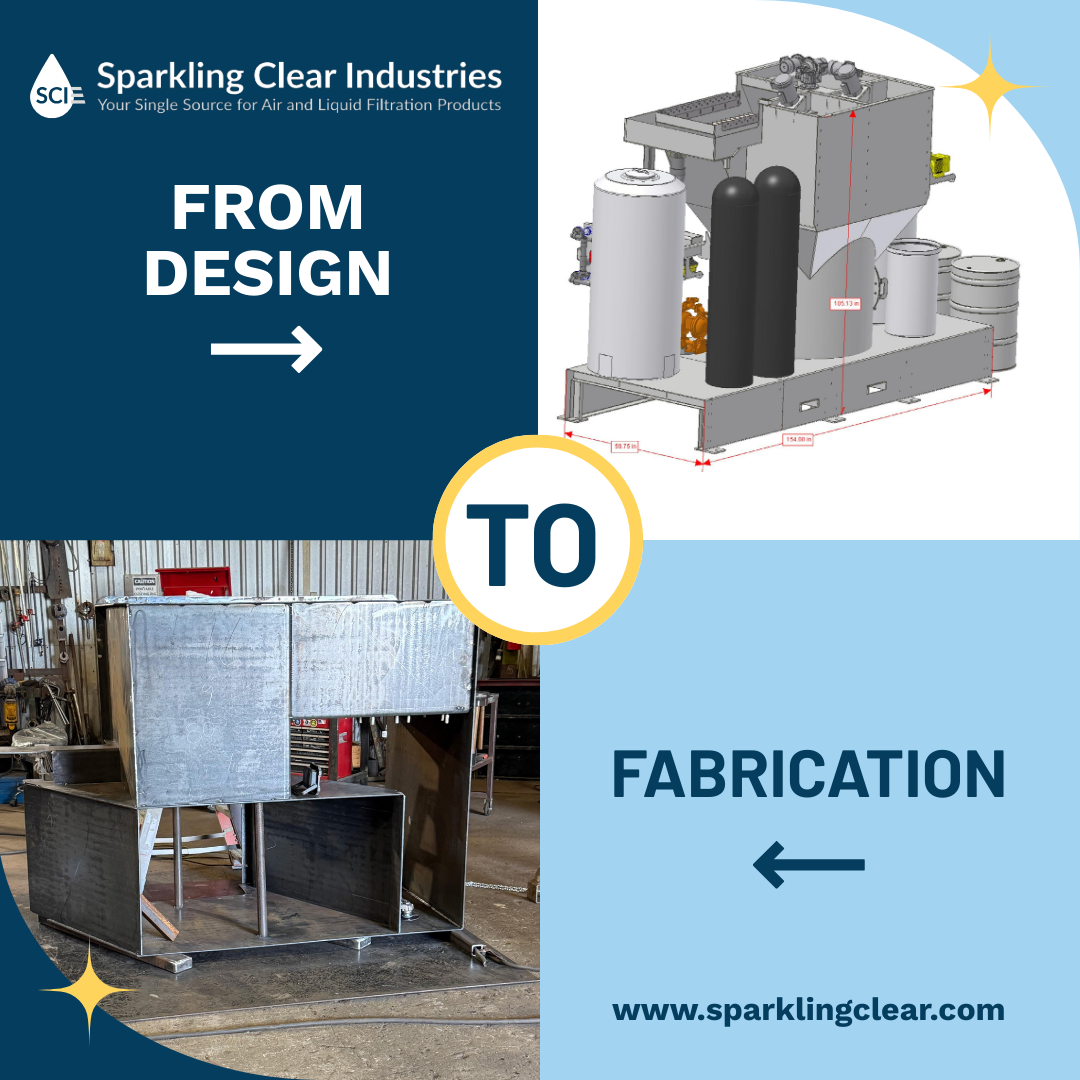Activated Carbon in Industrial Filtration Systems
April 19, 2023

Activated carbon is a flexible and efficient filter used in many industries. It helps remove impurities and create cleaner, safer, and eco-friendly results. In this blog, we'll discuss how activated carbon works in filtering systems, its advantages, and important things to keep in mind when using it in your facility.
How Activated Carbon Works in Industrial Filtration Systems
Activated carbon is created from materials with heavy carbon composition like coal, coconut shells, and wood. It goes through a special process that makes it more porous and increases its surface area. This makes it very efficient at catching and holding onto many different types of
impurities.
Carbon filtration is highly effective in various sectors, including industrial applications, breweries, water treatment facilities, and wastewater management as well as Vapor Phase Activated Carbon for air pollution control of released vapors/gasses into the atmosphere. Industrial grade activated carbon filters are employed to eliminate a wide array of contaminants, such as:
● Organic materials
● Pesticide residues
● Per- and poly-fluoroalkyl substances (PFAS)
● Hydrocarbons
● Phenolic compounds
● Chlorine and its derivatives
● Unpleasant tastes and odors
The large surface area and porous nature of activated carbon are key to its effectiveness, as they maximize the opportunities for it to capture contaminants. By using activated carbon filters, businesses can ensure the effective removal of impurities and maintain the highest standards of water and air quality.
Benefits of Activated Carbon in Industrial Filtration Systems
There are various benefits to using activated charcoal compared to other filtration media aside from the broad spectrum of chemicals and heavy metals they can filter out. Activated charcoal benefits also include:
● High Adsorption Capacity. The large surface area and porous structure of activated carbon allow it to adsorb a significant amount of impurities. This high capacity for adsorption ensures that contaminants are efficiently removed, leading to a cleaner end product and a reduced need for frequent filter replacement.
● Environmentally Friendly. Activated carbon offers an eco-friendly filtration solution for businesses as a natural, renewable, biodegradable, and sustainable material. Spent activated carbon can often be reactivated and reused as well, further minimizing its environmental impact.
● Cost-Effective. Activated carbon is a high-performance and cost-effective solution for industrial filtration. Its ability to handle a wide range of contaminants, combined with its reusability, ensures that facilities can save on both material and operational costs.
Things to Consider When Using Activated Carbon in Industrial Filtration Systems
When implementing activated carbon in industrial filtration systems, it's crucial to consider several factors to achieve optimal performance. Key considerations include:
● Particle Size. The size of the activated carbon particles influences its adsorption capacity and the pressure drop experienced by the system. Smaller particles generally provide a higher adsorption capacity but can cause a higher pressure drop. It's essential to strike a balance between the two factors for optimal filtration performance.
● Type of Activated Carbon. Various types of activated carbon are available, including bituminous coal and coconut shell granular activated carbon (GAC), powdered, and extruded. The choice of activated carbon type depends on the specific application and desired filtration performance.
● Pre-treatment. In some cases, pre-treatment of the activated carbon is required to enhance its adsorption capacity or protect it from fouling. This can involve impregnating the carbon with specific chemicals or using a pre-filter to remove larger particles.
● Regular Maintenance. Regular monitoring and maintenance of the activated carbon filtration system are crucial to maintain peak performance and prevent breakthroughs. This includes checking for pressure drops, inspecting the carbon bed, and replacing or reactivating the spent carbon as needed.
Sparkling Clear Industries Can Help You Choose the Perfect Filtration Solution
Activated carbon serves as a powerful, versatile, and cost-effective solution in industrial filtration systems. Since 1985 our mission has been and will continue to be doing right by you. If you are unsure if activated carbon is right for your needs, or if you want to ensure you get the perfect filtration media for your system, contact our experts today.
Share this Post!

At Sparkling Clear Industries, we take pride in helping our customers solve real problems with practical, reliable solutions. One of our current projects is a great example of what that looks like in action. A local manufacturer came to us with a costly challenge: their wastewater stream contained enough oil and grease that it had to be hauled offsite for treatment. That process was costing them nearly $40,000 every month. Instead of continuing to pay for disposal, they wanted a long-term, on-site solution. Our team got to work.

As 2025 comes to a close, our industry has one more opportunity to come together—not just for networking, but to make a meaningful difference in the lives of children in our community. Sparkling Clear Industries is proud to join Brock Group and LEL Environmental as sponsors of the Holiday Toy Drive Industry Night at Schafer’s on Thursday, December 4th.

When: November 13, 2025 Where: Sylvan Beach Pavilion, 1 Sylvan Beach Dr., La Porte, TX 77571 Who: This event brings together leaders from the refining, petrochemical, manufacturing, and industrial services community for an evening of genuine conversations, good food, and industry connection. What to expect: Door prizes, good food and drink (with the added benefit of caring for community: you’re encouraged to bring a canned good for The Bridge Over Troubled Waters ). What to do next: Mark your calendar for November 13. Register for the event if you haven’t yet. (Here’s the registration link.) When you see us there, drop by and let us know what’s happening in your operation — downtime threats, upcoming shutdowns, filtration and vessel challenges — we want to talk solutions. Bring a canned good! It’s a small gesture that gives back to our community. We look forward to meeting new faces and reconnecting with familiar ones. If you’re planning to attend, reach out in advance and we can set a time to meet at the pavilion. See you at Sylvan Beach Pavilion!

